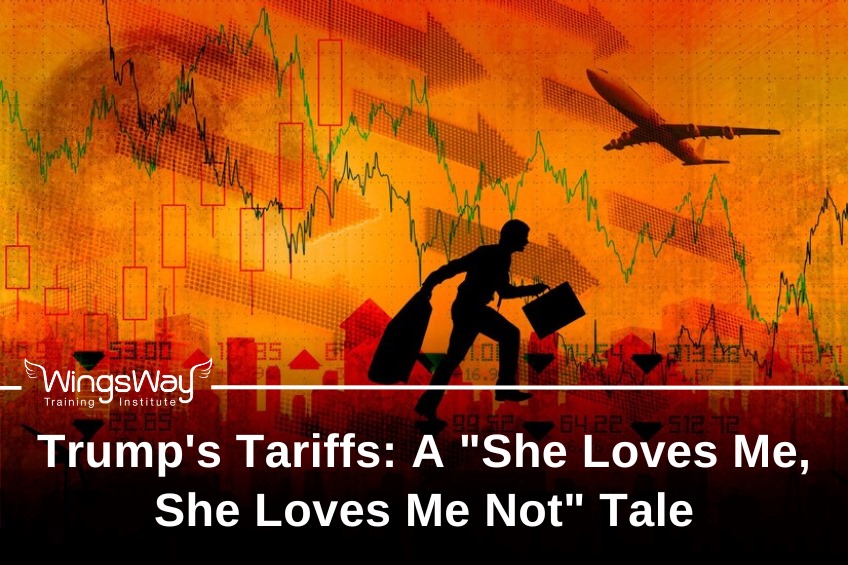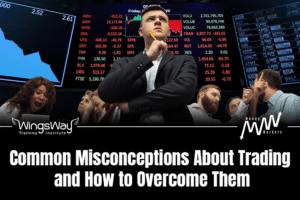
Trump’s Tariffs: A “She Loves Me, She Loves Me Not” Tale
Just when you thought the global economy was settling into a rhythm, President Donald Trump has once again tossed a pebble (or perhaps a boulder) into the pond, sending ripples across international markets. On April 2, 2025, in what he dubbed “Liberation Day,” Trump announced a sweeping set of tariffs aimed at rectifying what he perceives as unfair trade practices.
What Are Tariffs, Anyway?
Before diving into the nitty-gritty, let’s break down the basics. Tariffs are essentially taxes imposed by a government on imported goods. They serve multiple purposes: protecting domestic industries from foreign competition, generating revenue, and sometimes as leverage in trade negotiations.
Think of them as the cover charge at an exclusive club—making it a tad more expensive for outsiders to get in, thereby giving the locals a better shot at the dance floor.
Trump’s Tariff Timeline: A Chronology of Recent Events
Understanding the sequence of events is crucial to grasp the full impact of the recent tariff developments. Here’s a detailed timeline from April 2, 2025, to the present:
- April 2, 2025: “Liberation Day” Announcement
President Trump, in a speech dubbed “Liberation Day,” announced a comprehensive overhaul of U.S. trade policy. This included a universal 10% tariff on all imports, with additional country-specific tariffs targeting approximately 60 nations. China faced an additional 34% tariff, bringing its total to 44%.
- April 3, 2025: Global Market Reactions
In response to the tariff announcement, global stock markets experienced significant declines. The Dow Jones Industrial Average fell by 3.2%, the S&P 500 dropped over 4%, and the Nasdaq decreased by 5.2%.
- April 9, 2025: Tariffs Take Effect and Immediate Consequences
The announced tariffs officially took effect. China retaliated by imposing tariffs of up to 84% on U.S. goods and blacklisting additional American firms. Major U.S. stock indices reacted negatively: the Dow Jones declined by 0.8%, the S&P 500 fell by 1.6%, and the Nasdaq dropped over 2%. Companies like Apple and Tesla were notably affected, with Apple reaching an 11-month low.
President Trump, addressing the market volatility, urged Americans to “be cool” and expressed confidence in the long-term benefits of the tariffs. He highlighted ongoing negotiations with several countries aimed at reducing trade barriers.
- April 9, 2025 (Later in the Day): Tariff Adjustments
In a surprising move, President Trump announced a 90-day pause on the additional tariffs (above the universal 10%) for all countries except China. China’s tariffs were increased to 125%. This announcement led to a swift positive reaction in the stock market, with the S&P 500 rising more than 7% within minutes.
The sudden policy shift prompted discussions about potential insider trading, especially after a tweet from President Trump earlier that day stating, “A great time to buy!” This led to accusations of market manipulation and calls for investigations.
- April 10, 2025: Ongoing Developments
Countries affected by the tariffs are adopting varied strategies in response. China has implemented significant retaliatory tariffs and blacklisted U.S. firms. The European Union announced tariffs on $23 billion worth of U.S. goods. Other nations, such as Japan and Vietnam, have initiated diplomatic talks to address the trade tensions.
- April 11 – China Escalates Retaliation
China announces an increase in tariffs on all American imports from the previous 84% to 125%, effective April 12, 2025. This move is in direct response to the U.S. raising tariffs on Chinese goods to 145%.
- April 12 – Market Turmoil Intensifies
The escalation in tariffs leads to significant market volatility:
- Dow Jones: falls 2.5%
- S&P 500: declines 2.8%
- Nasdaq: drops 3.1%
This sequence of events highlights the rapid and dynamic nature of international trade relations and their profound impact on global markets. Investors express concerns over prolonged trade tensions and potential impacts on global economic growth at the time of writing.
The Overall Trump’s Tariff Update as of 10/04/25
In his latest move, Trump introduced a two-tier tariff system:
A Universal 10% Tariff: This blanket tariff applies to all imports entering the U.S., sparing no nation. It’s like Oprah’s giveaway, but instead of cars, everyone’s getting taxed.
Country-Specific “Reciprocal” Tariffs: On top of the universal tariff, certain countries face additional duties ranging from 11% to 50%, based on what the administration deems as non-reciprocal or discriminatory trade practices. For instance:
China: Faces a staggering 125% tariff on its imports.
European Union: Hit with a 20% duty.
Vietnam: Hit with a 46% tariff.
These tariffs took effect on April 9, 2025, and have since been the talk of the trading town.
Market Mayhem: Dollars and Sense
The immediate aftermath? A rollercoaster ride for global markets. Major indices took a nosedive:
S&P 500 and Dow Jones: Both plunged over 10% following the announcement.
Investors scrambled, sectors shuddered, and the financial world braced for impact. But why do tariffs send markets into a frenzy?
The Chain Reaction:
- Increased Costs for Importers: Companies relying on foreign goods face higher expenses, potentially squeezing profit margins.
- Consumer Price Hikes: Businesses might pass on these costs to consumers, leading to inflationary pressures.
- Retaliatory Measures: Affected countries may impose their own tariffs on U.S. exports, impacting American businesses abroad.
- Supply Chain Disruptions: Global companies with intricate supply chains may face operational challenges, leading to decreased efficiency and increased costs.
In essence, tariffs introduce uncertainty—a notorious nemesis of market stability.
Trading in Turbulent Times: Risky Business or Golden Opportunity?
For traders and investors, volatility is both a challenge and an opportunity. The recent tariff turmoil has:
- Elevated Market Volatility: Rapid price swings can be nerve-wracking but also present chances for savvy traders to capitalise on short-term movements.
- Sectoral Shifts: Industries like manufacturing and agriculture, heavily reliant on exports, may face headwinds, while domestic-focused companies might find favour.
- Currency Fluctuations: Tariff announcements can influence currency valuations, opening avenues in forex trading.
However, it’s crucial to approach this landscape with caution. While the potential for profit exists, so does the risk of significant losses. Due diligence, risk management, and staying informed are more critical than ever.
The Tweet Factor: When 280 Characters Move Billions
Adding another layer to this intricate dance is Trump’s penchant for communicating policy shifts via social media. A prime example:
April 9, 2025: Hours before announcing the tariff pause, Trump tweeted, “A great time to buy!” leading to accusations of market manipulation and insider trading.
Such instances highlight the modern reality where a single tweet can sway markets, underscoring the importance for investors to remain vigilant and discerning.
💡Pro Tip: Follow Trumps Twitter handle for the latest news regarding the economy, markets and the future of the country (at least for the next 4 years).
The Bigger Picture: A Game of Economic Chess
Beyond the immediate market reactions, these tariffs signal a strategic move in the global economic arena. By imposing such measures, the U.S. aims to:
- Address Trade Imbalances: Particularly with nations like China, where the U.S. has historically run significant deficits.
- Protect Domestic Industries: Encouraging consumers to buy American-made products by making foreign goods more expensive.
- Leverage Negotiations: Using tariffs as a bargaining chip to secure more favourable trade agreements.
However, this approach isn’t without risks. Retaliatory tariffs strained diplomatic relations, and potential violations of international trade laws could have long-term repercussions.
Navigating the New Normal
In this ever-evolving landscape, staying informed is paramount. Whether you’re a seasoned investor or a curious newcomer, understanding the implications of such policy shifts can empower you to make informed decisions. Remember, in the world of trading and investing, knowledge isn’t just power—it’s profit.
So, as the petals of this “she loves me, she loves me not” tale continue to fall, keep your eyes on the market, your ears to the ground, and perhaps, your Twitter notifications on.
If the current market has motivated you to start trading and investing but you don’t know how to start, enrol for our beginner to advanced level stock market trading courses.
Disclaimer: Trading and investing involve significant risks. Always consult with a financial advisor before making any investment decisions.



